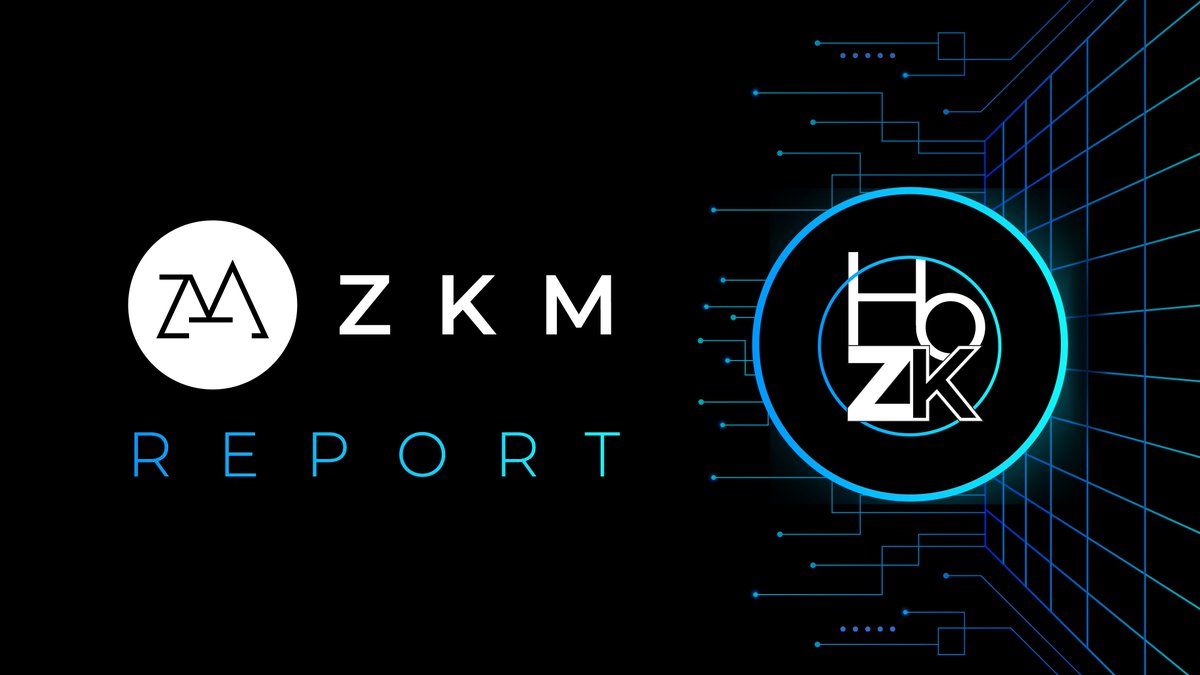The ZKM Special
@ProjectZKM has released zkMIPS 1.0, the first fully production-ready version of its MIPS-based virtual machine designed for high-performance verifiable computation:
This is the most significant upgrade since the project began, delivering a 6x to 19x performance boost over version 0.3.0, thanks to a complete technical overhaul.
Some key aspects of the upgrade include:
• The architecture saw an upgrade from MIPS2 to MIPS32r2, enabling access to a broader instruction set and unlocking compiler-level optimizations and smaller program sizes.
• zkMIPS now runs on the Plonky3 backend - a modern STARK system using the FRI protocol - and benefits from the shift to the 31-bit KoalaBear prime field, offering faster arithmetic than the previous 64-bit Goldilocks setup.
• Merkle trees have been replaced with multiset hashing for memory consistency, reducing witness size and supporting parallel verification. A modular chip-based circuit architecture minimizes constraint area, and hot-path operations like Keccak and field arithmetic have been offloaded into precompiles to reduce proving costs.
The system is already integrated into the ZKM Proof Network and is being used to live-prove @ethereum mainnet blocks as part of the @ethereumfndn’s @eth_proofs initiative. It's also live in production with @GOATRollup, a Bitcoin L2 built on BitVM2.
Reaction
Multiple media outlets picked up the news straight off the bat, with @Utoday_en publishing an exclusive feature about what sets the project apart from other zkVMs:
The article offers overall praise for the ZKM team and its notable engineering quality, and emphasizes that choosing MIPS32r2 over RISC-V offers architectural advantages: shorter programs, fewer constraints, and better alignment with ZK circuits.
The launch also saw comments from Ethproofs, @a16zcrypto, and House of ZK's very own @0x1164:
ZKM announced a public discussion of the zkMIPS 1.0 release, with the project’s CTO, @sd_eigen, discussing optimizations, benchmark results, system architecture, and future development plans.
The event will take place on May 12 at 12pm UTC:
Engineering Insights
In a recent article, the project explained why, in developing its zkMIPS virtual machine, the team chose the MIPS32r2 architecture over RISC-V - even though the latter is the default choice for most modern zkVMs.
The piece states that the decision wasn’t about being different, but about selecting the most efficient foundation for scalable verifiable computation.
One of the main reasons was the higher instruction density of MIPS32r2. With operations like MOVZ, MOVN, and MADDU, complex logic can be expressed in fewer steps, reducing execution trace length. In contrast, the same logic on RISC-V often requires more instructions, increasing proof burden.
Another factor was the maturity and stability of the MIPS ecosystem. With decades of usage and a fixed specification, MIPS is well-tested - even used in critical systems like Optimism’s fraud-proof VM. RISC-V, although growing fast, is still evolving and fragmented.
The complete article can be found here:
Show original
101.5K
209
The content on this page is provided by third parties. Unless otherwise stated, OKX is not the author of the cited article(s) and does not claim any copyright in the materials. The content is provided for informational purposes only and does not represent the views of OKX. It is not intended to be an endorsement of any kind and should not be considered investment advice or a solicitation to buy or sell digital assets. To the extent generative AI is utilized to provide summaries or other information, such AI generated content may be inaccurate or inconsistent. Please read the linked article for more details and information. OKX is not responsible for content hosted on third party sites. Digital asset holdings, including stablecoins and NFTs, involve a high degree of risk and can fluctuate greatly. You should carefully consider whether trading or holding digital assets is suitable for you in light of your financial condition.

